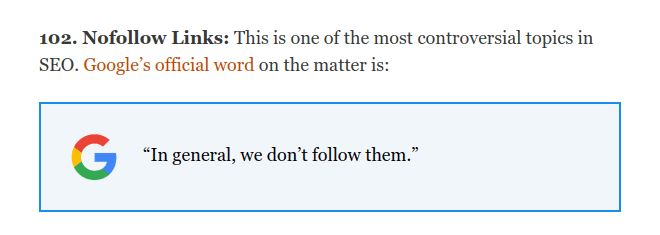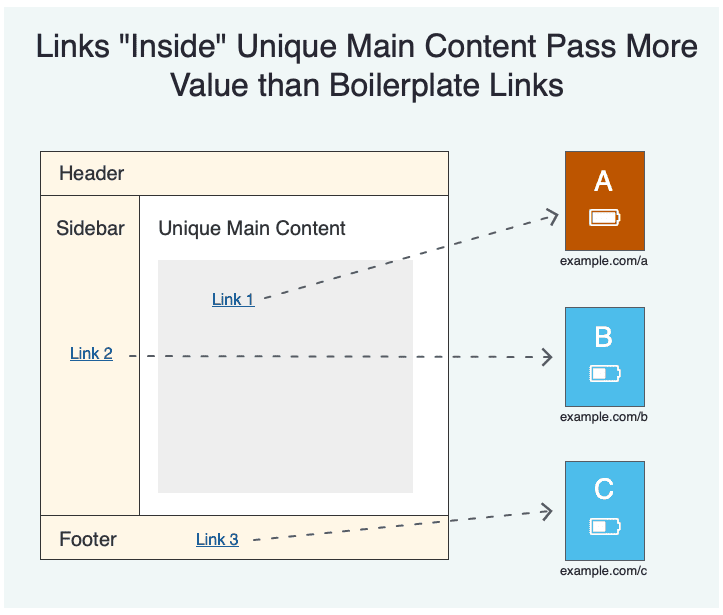Every website owner with even a rudimentary knowledge of Google’s ranking algorithm knows that quality backlinks are one of the most important organic ranking factors.
Basically, the more sites that are casting a ‘vote’ for your website by linking to it, the higher your chances of ranking high in the SERPs for your targeted keywords.
That said, it’s pretty unfortunate that a lot of website owners get hung up on the “the more websites that link to you, the better” part of that sentence.
It’s never that simple when it comes to
While the quantity of backlinks is important, spamming your website with them won’t help you achieve high organic rankings. The link-building strategies that you use need to be designed to generate high(er) quality backlinks first and foremost. The amount of backlinks is secondary, and should never come at the expense of the quality.
Low-quality backlinks can result in a Google Penguin algorithmic penalty. You will easily recognize it when it hits you because your traffic graph will look the exact opposite of what you were trying to accomplish:

So What Makes High-Quality Backlinks?
Since you’re already putting a lot of effort into your website, you definitely want to avoid seeing that plummeting traffic (and rankings) graph. You want an up arrow there that you’ll ride all the way to that sweet #1 position in the SERPs (and to the bank).
To get there, you need to focus on building high-quality backlinks.
Now, there’s a lot of confusion, even among
Here are the top 5 things you need to consider when evaluating backlink quality:
- Domain and page relevancy
- Google PageRank
- Do follow link attributes
- Length and quality of content
- Type and location of backlink
Domain & page relevancy
According to an ex-Googler, quality backlinks from relevant websites count more than backlinks from unrelated sites.
This is because of user expectations. When reading, users expect backlinks to lead them to content that covers adjacent topics in more depth. A mismatch results in lower user satisfaction, which is something that Google works actively on discouraging.
Domain & page PageRank
PageRank is Google’s way of assessing how important a website is in the grand scheme of things. The higher the PageRank of a particular website is, the stronger the ‘vote’ it casts when linking to other sites.
Google even mentions “important websites” in their Webmaster Guidelines, as you can see from the screenshot below:

While you can only guess at the PageRank of a particular site or a page, some important indicators are website/brand authority, relevance, popularity, and traffic.
Paul Teitelman, of Teitelman
Do follow vs no-follow link attributes
Every backlink you earn better be do-follow, otherwise, it won’t pass on an ounce of PageRank to your website. While no-follow links can be good for traffic (and the attribute should be used for paid and sponsored content), they essentially tell the Google Bot not to transfer the vote to the website they are linking out to.

Length and quality of linking content
Long-form content (2000+ words) ranks better in the SERPs, which is why it should be a primary focus in all your quality link-building campaigns.

Because of its potential to rank better, this content will usually earn a higher PageRank. The higher the PageRank, the stronger the ‘vote’ that page can cast for the websites it’s backlinking to.
It’s important to mention here that the quality of content also matters. If it’s well-written and unique, a page will cast a stronger vote via its backlinks. That’s because quality content gets ‘stickier’ traffic – people tend not to bounce back that much, and they are more likely to click on the links provided inside. On the other hand, poorly written or spun content won’t be as engaging, which is why it’s not as valuable when it comes to backlinks.
Type and location of the backlink
There are a lot of types of backlinks but, for the sake of brevity, let’s place them in two broad groups – editorial and non-editorial backlinks.
Non-editorial backlinks are not vetted – no one decides whether or not they get placed on a website. These are usually unmonitored comment links, forum links, and similar. As such, Google doesn’t give them much weight since they can be manipulated. This is not true of editorial backlinks, which are chosen specifically by the editor because they bring added value to the table.
Additionally, it matters wherein the content the backlink appears. Google values links that are higher up in content more than it values links that are near the bottom of the page. That’s because (the reasonable) assumption is that the links higher up will get more clicks from actual users. In fact, Google’s quality raters are instructed to look specifically for in-content, near-the-top links when assessing the quality of a web-page.

Image: According to research done by MOZ, in-content, higher-up backlinks count more than backlinks added to the sidebar or the footer.
How To Earn High-Quality Backlinks?
Finding (and earning) quality backlinks is getting tougher each year, and rightfully so – that #1 position in the SERPs is something that can make companies a lot of money.
Marketers should at least break a sweat when aiming for it.
If you’re after high-quality backlinks for your website, understand that there’s no easy way to get them. There’s only a handful of link-building methods that still work for this, some of which are:
- Authority guest posting
- Broken link-building
- Original research & data
- Aggressive content promotion
Your focus should always be on the content that you produce – if it’s high-quality, it’s going to be much easier for you to pitch it to other authority sites in your niche. Heck, it might even earn a couple of quality backlinks all on its own!
Are you hunting for high-quality backlinks yourself? What methods are you using to earn them? Make sure to let us know in the comment section, and let’s make link-building easier for everyone.


